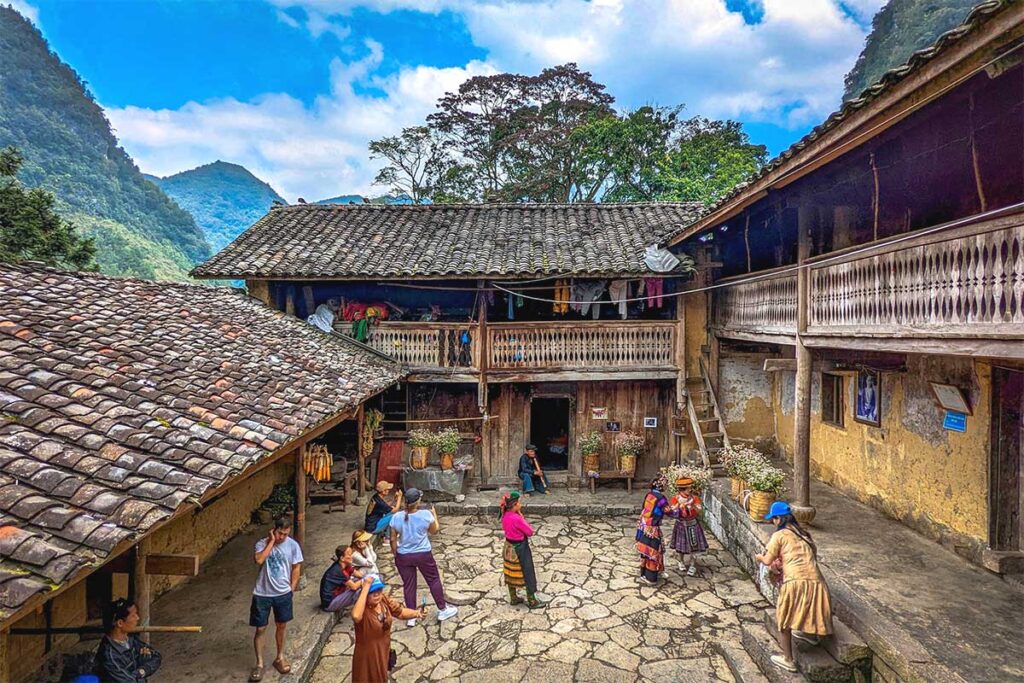About Pao’s House
Built by a Hmong Leader
Pao’s House was constructed in 1947 by Mua Sua Pao, a wealthy and respected Hmong clan leader in the Sung La region. At the time, it was one of the most elaborate homes in the area, built using traditional techniques and the best available craftsmanship.
Traditional Hmong architecture
The house follows a U-shaped layout, with three wings surrounding a stone-paved courtyard. The main building, located at the back, has two stories and includes bedrooms and a central living area. The two side wings were traditionally used for cooking, storing food, and sheltering livestock. It’s built from compacted earth walls, timber columns, and clay roof tiles, designed to stay cool in summer and warm in winter.
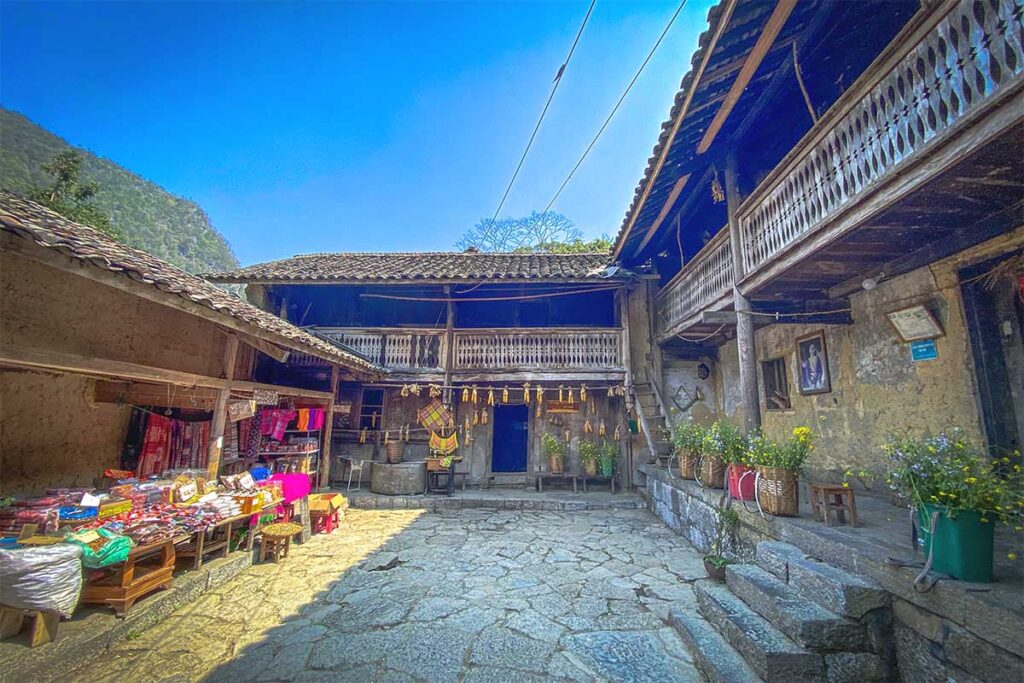
Cultural features
Small details reflect Hmong spiritual beliefs — like the wooden gate made without iron hinges, which are believed to bring bad luck. The central pillars and doorways are considered sacred, so guests are expected to avoid leaning or resting against them.
Still a living home
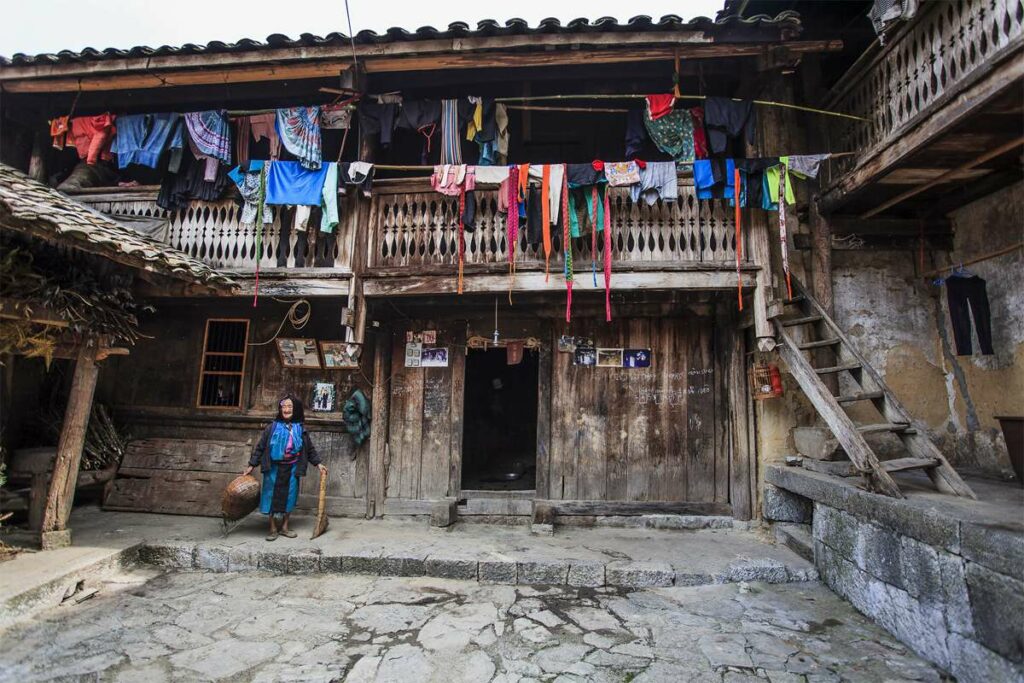
Unlike a preserved museum, the house is still lived in by descendants of the original owner. Mr. Mua Phai Tua and other family members welcome visitors during the day while continuing daily routines like cooking, farming, and caring for animals. You might see traditional tools like stone mortars, corn grinders, and water jars still in use.
About Lung Cam Village – The setting of Pao’s House
Pao’s House is located in Lung Cam Village, a small, traditional settlement in Sung La Valley. The house may be the main attraction, but the village itself is worth a short walk. Many of the surrounding homes are just as old — built with the same earthen walls, stone fences, and yin-yang roof tiles typical of northern Hmong architecture.
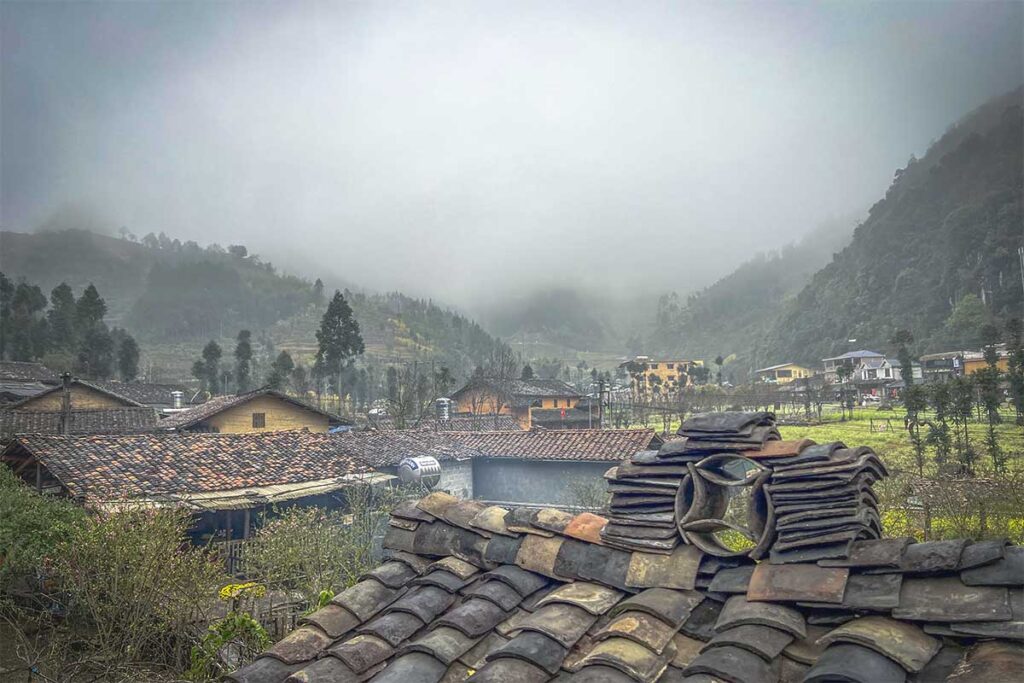
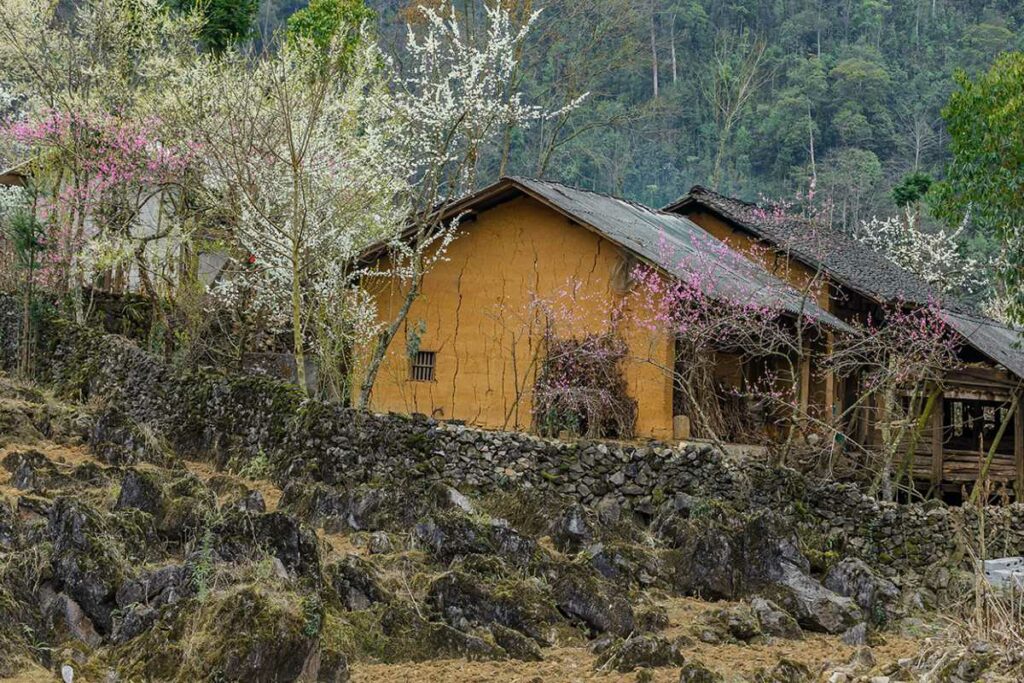
The village is home to about 36 households, mainly Hmong, with some Lo Lo and Han families as well. Each ethnic group brings its own customs, clothing, and cultural details, which you can glimpse as you walk through. You’ll often see locals tending to fields, drying corn, or selling herbs and snacks at roadside stalls. The pace is slow and the atmosphere is quiet — a nice contrast to more touristy areas.
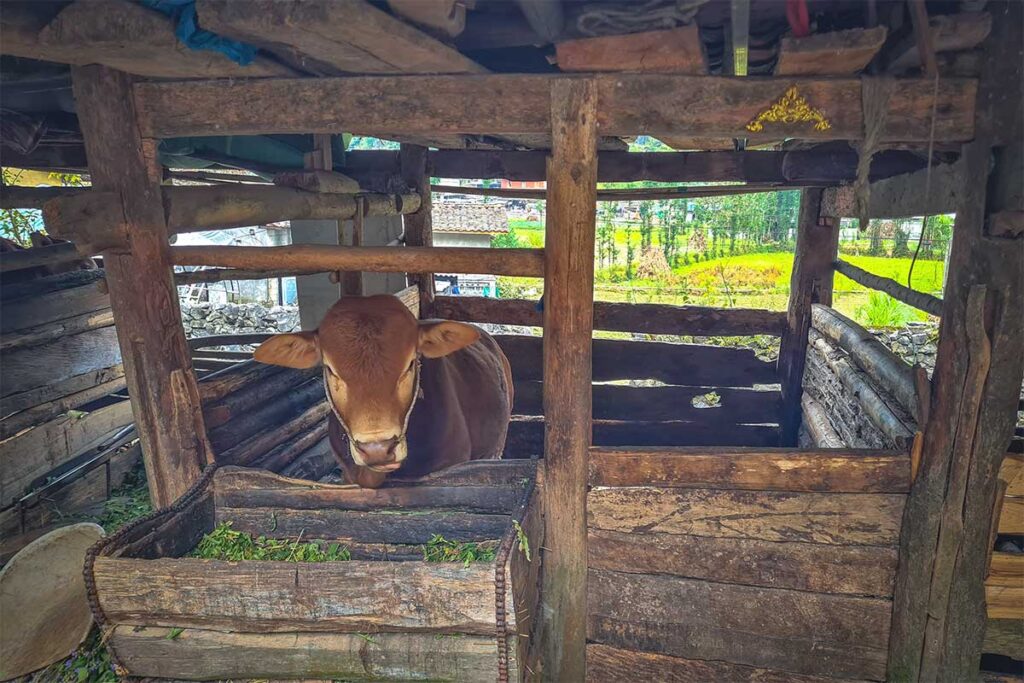
Lung Cam is also part of the Dong Van Karst Plateau Geopark, a UNESCO-recognized region that preserves both geological wonders and traditional lifestyles. Exploring the village gives you more context for Pao’s House and a better feel for life in this remote corner of Ha Giang.
The story behind Pao’s House (Film background)
Pao’s House gained national attention after it was featured as the main filming location in the 2006 Vietnamese movie “The Story of Pao” (Chuyện của Pao). The film tells the emotional story of a young Hmong girl named Pao as she uncovers hidden family truths and reconnects with her birth mother. It’s a slow, atmospheric film that highlights themes of motherhood, loss, tradition, and identity within Hmong culture.
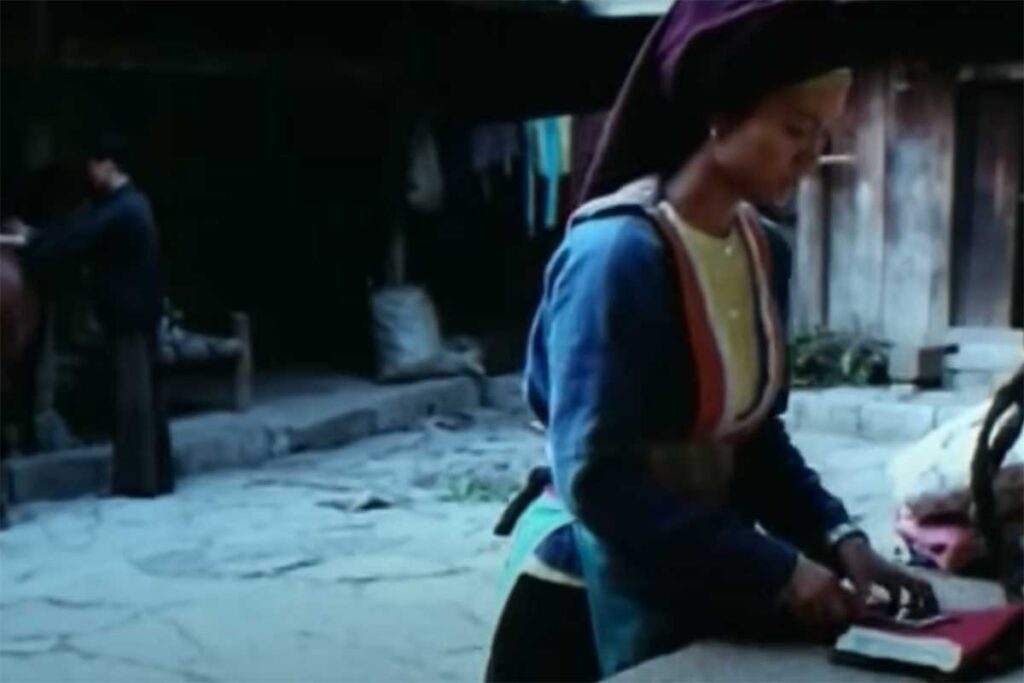
The movie was adapted from a short story titled “The Sound of Lips Behind the Stone Fence” by author Do Bich Thuy. It was directed by Ngo Quang Hai and received widespread critical acclaim. The Story of Pao won the prestigious Golden Kite Award in Vietnam and was also screened at the Cannes Film Festival in 2007 — a rare international recognition for a Vietnamese film at the time.
For many Vietnamese travelers, especially those familiar with the film, visiting Pao’s House is like stepping into a piece of cinema history. However, if you haven’t seen the movie, the connection may feel less meaningful. Even so, the house remains a fascinating example of traditional Hmong architecture and a cultural stop worth including in your Ha Giang journey.
Things to see at Pao’s House
A visit to Pao’s House doesn’t take long, but if you pay attention, there are several interesting details that reveal the home’s history, cultural meaning, and continued use. It’s not a museum — but that’s part of the charm. You’re stepping into a real, lived-in space that has quietly held onto Hmong tradition for decades.
1. Traditional Hmong architecture
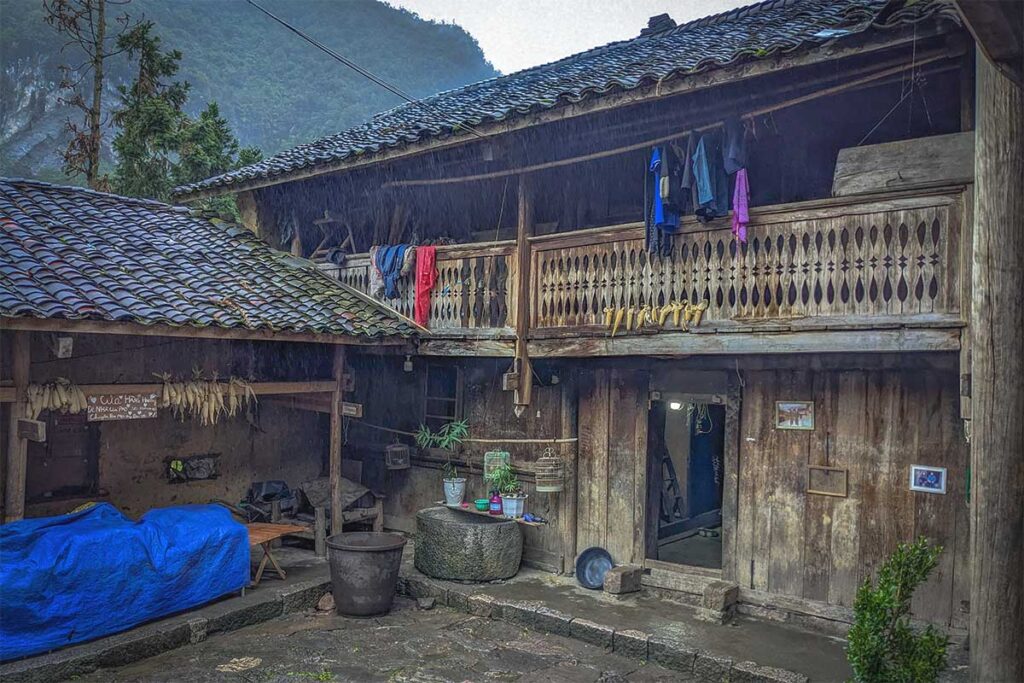
The house follows a three-part U-shaped layout, with two side wings and a main building facing a stone-paved courtyard. The central section is a two-story wooden house used for living and sleeping, while the side buildings were traditionally used for storing food, cooking, and keeping animals.
Everything is made using local materials — compacted earth walls, timber columns, and a tiled roof designed for the region’s climate. The front gate is especially symbolic: it’s made of wood, and unlike most modern gates, it has no metal hinges. This follows Hmong spiritual beliefs that metal can disturb household harmony or attract bad energy.
2. Household artifacts
Inside the house, you’ll find everyday objects that have been used across generations: stone mortars for grinding corn, large clay jars for storing water, and traditional kitchen tools.
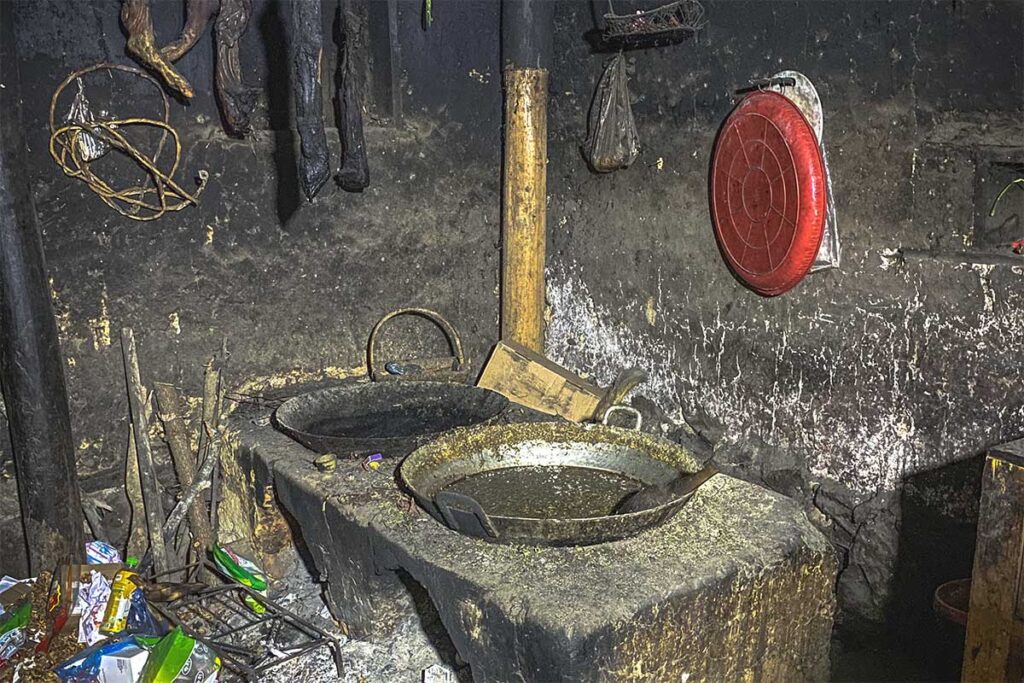
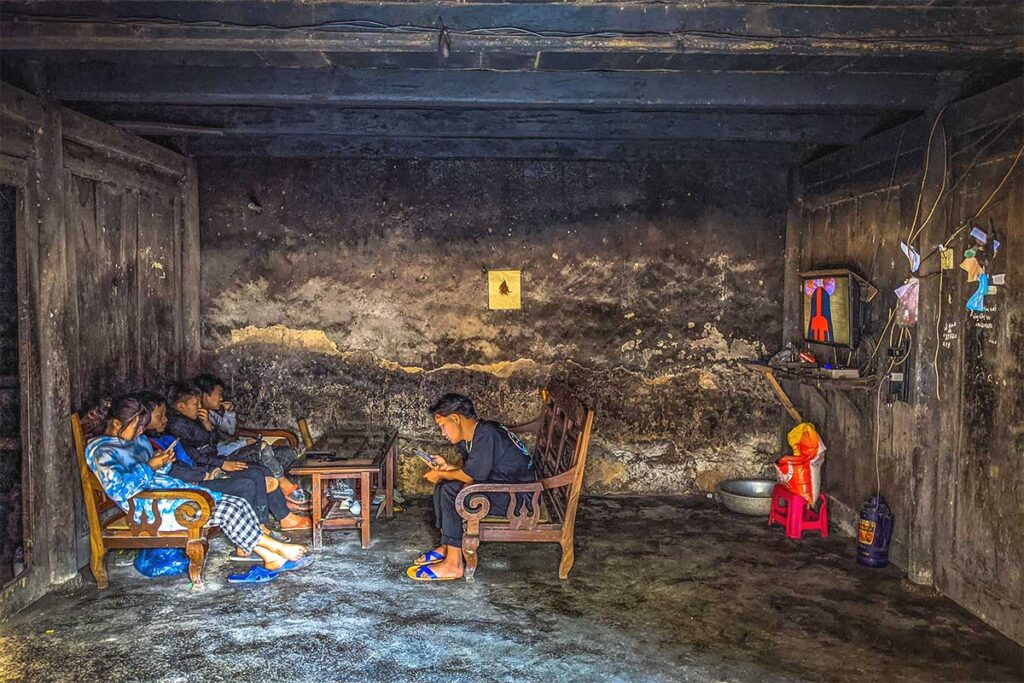
Some parts of the home are decorated with black-and-white family portraits, showing the lineage of the Pao family. These aren’t staged displays — the house is still in use, and you may see residents cooking, eating, or watching TV in the very rooms you’re walking through.
3. Outside area & gardens
The courtyard is framed by stone walls and flower gardens that bloom in different seasons. In October–November, you’ll see buckwheat flowers; in December–January, bright yellow mustard blossoms are everywhere. Some areas charge small photo fees if you want to pose in the gardens or rent traditional clothing.
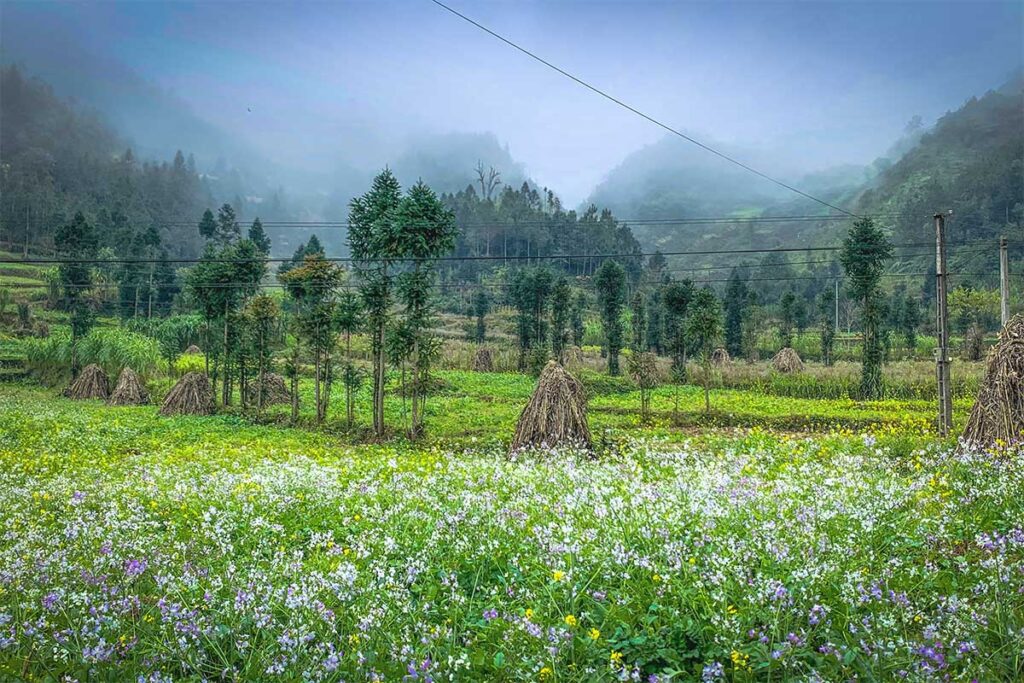
The setting is beautiful, but it has a slightly touristy feel — with rental stalls, souvenir tables, and locals offering photo ops. It’s best to visit with realistic expectations: it’s a cultural stop, not a hidden gem, but still a pleasant place to stretch your legs and see something unique.
Visiting information
Opening hours
Pao’s House is open daily from around 8:00 AM to 6:00 PM, though times are not strictly enforced. Visitors come and go throughout the day.
Entrance fee
The main entrance fee is 10,000 VND (about 0.40 USD) per person. This allows access to the main parts of the house.
Extra costs
You may encounter additional charges for:
- Photo gardens: 10,000–30,000 VND
- Traditional costume rental: ~30,000 VND per set
- Toilet use: 5,000 VND
These small fees are typical at rural attractions across northern Vietnam.
Time needed
Most visitors stay for 15–30 minutes. You might spend longer if you:
- Take photos in costume
- Browse souvenir stands
- Walk around Lung Cam Cultural Village
On-site facilities
Facilities are very basic. You won’t find cafés or restaurants, but there may be small stalls selling:
- Herbal teas
- Dried fruits and nuts
- Local snacks
It’s best to bring your own water and snacks if you’re doing a long drive on the Ha Giang Loop.
Cultural note
Keep in mind: this is still a lived-in home. Be respectful inside:
- Don’t touch personal items
- Don’t sit on the main furniture
- Ask before taking close-up photos of people or kids
Is it worth visiting?
Pao’s House is worth a short stop if you’re doing the Ha Giang Loop. Even if you haven’t seen the film, the traditional Hmong architecture alone makes it an interesting place to look around.
The house is authentic, but parts of the experience feel a bit commercialized — with small fees for everything from photo gardens to toilets, and a handful of souvenir stalls nearby. Still, it’s a rare chance to see what a Hmong house looks like from the inside, which most travelers otherwise wouldn’t experience.
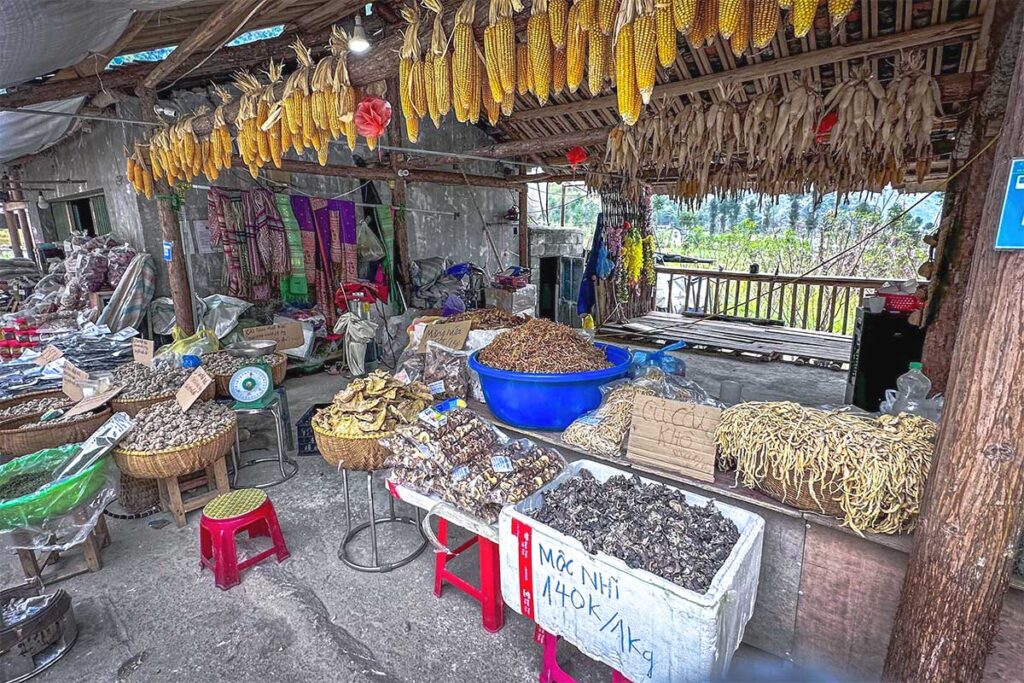
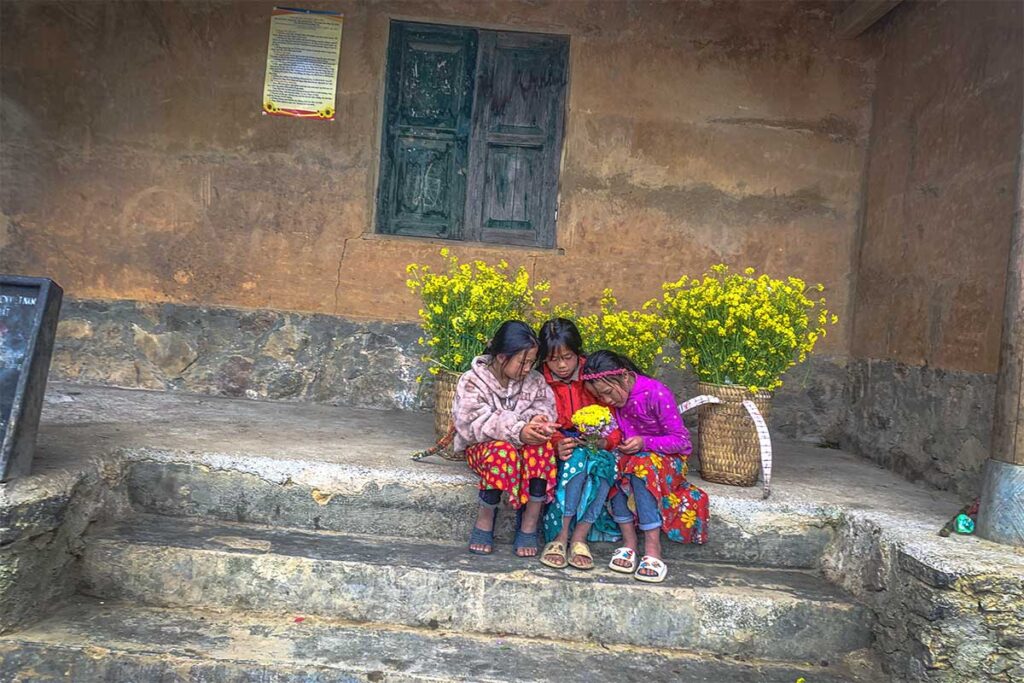
Think of it as a quick cultural stop, not a major attraction. It’s best enjoyed with modest expectations: no detailed museum displays, but a real structure with history, a lived-in feel, and a setting that makes for a pleasant break in the road, especially when passing through Sung La Valley.
How to get there
Location
Pao’s House is located in Lung Cam Village, within Sung La Commune, Dong Van District, Ha Giang Province.
It lies just off the QL4C highway, around 25 km before Dong Van town, making it a convenient stop on the Ha Giang Loop.
From Ha Giang City
The distance from Ha Giang City is approximately 122 km, which takes around 4 hours by motorbike or car.
Most travelers pass by here on Day 1 of the Ha Giang Loop, especially when riding clockwise from Ha Giang → Quan Ba → Yen Minh → Dong Van.
How to visit
You can reach Pao’s House in several ways:
- Motorbike (self-drive or Easy Rider): Ideal for flexibility and photo stops.
- Car or jeep with driver: Best for comfort, families, or those not confident riding.
- Guided tours: Many loop tours include a stop at Pao’s House as part of the cultural experience.
Look out for the signposted turnoff to Lung Cam Cultural Village — it’s clearly marked and easy to follow from the main road.
Discover tours that stop at Pao’s House
Join a Ha Giang Loop tour that includes Pao’s House, scenic valleys, and local culture. Whether by motorbike or car with driver, these guided routes offer comfortable transport and meaningful stops along the way.
Tips for Visiting Pao’s House
Bring small cash
Entrance fees, toilet use, snacks, or photo garden charges are all paid in cash — usually small amounts.
Avoid peak hours
Weekends and national holidays can be crowded. Visit on weekdays or early in the day for a quieter experience.
Respect sacred areas
Don’t touch or lean on the wooden pillars or sit in the central doorway — these are sacred in Hmong culture.
Dress appropriately
Avoid wearing full white outfits, which are associated with funerals. Choose modest, respectful clothing.
Be mindful inside
This is still a family home. Always ask before entering private areas or taking close-up photos of residents.
Optional, not essential
You can skip this stop if time is tight — but it’s a nice cultural break if you’re already passing through Sung La.
Watch the movie (if possible)
Viewing The Story of Pao beforehand helps add context and emotional weight to the visit.
